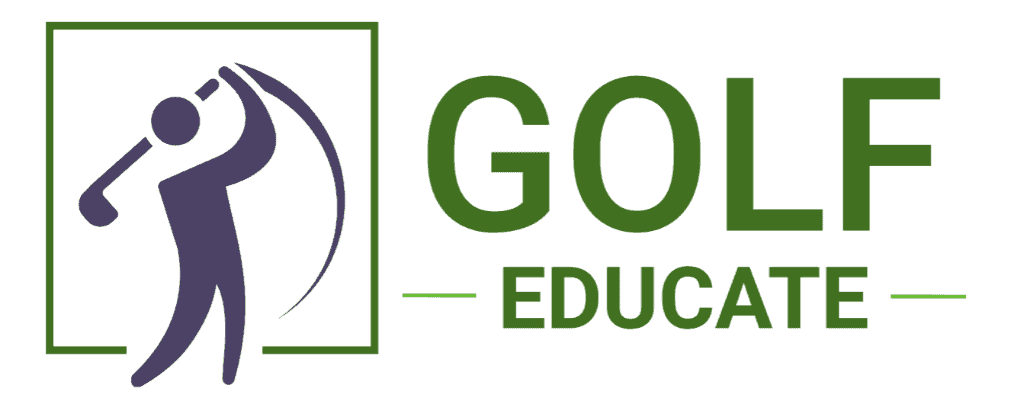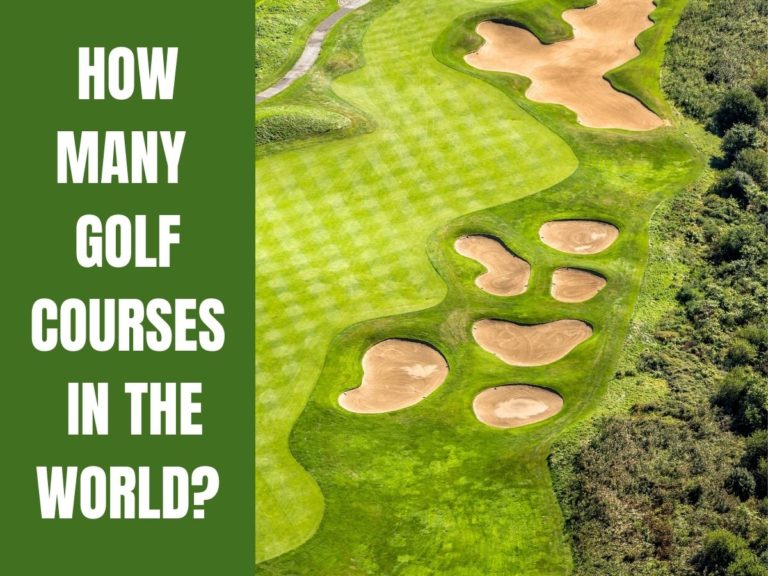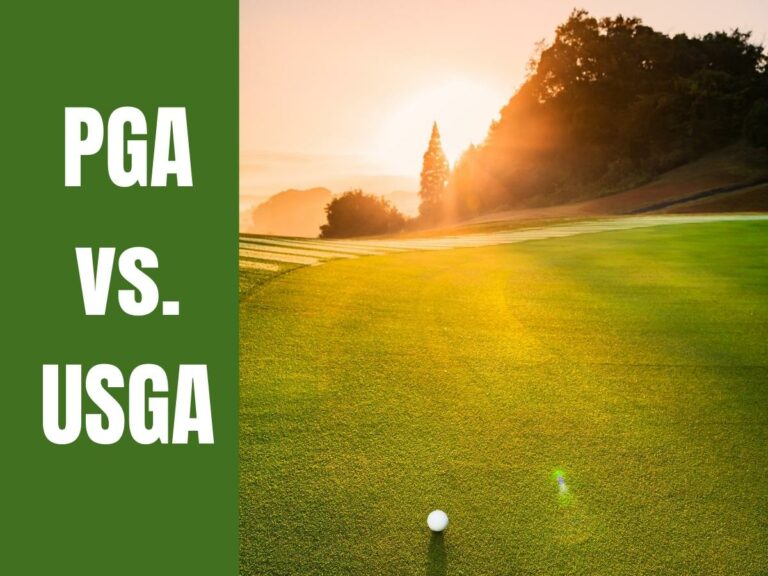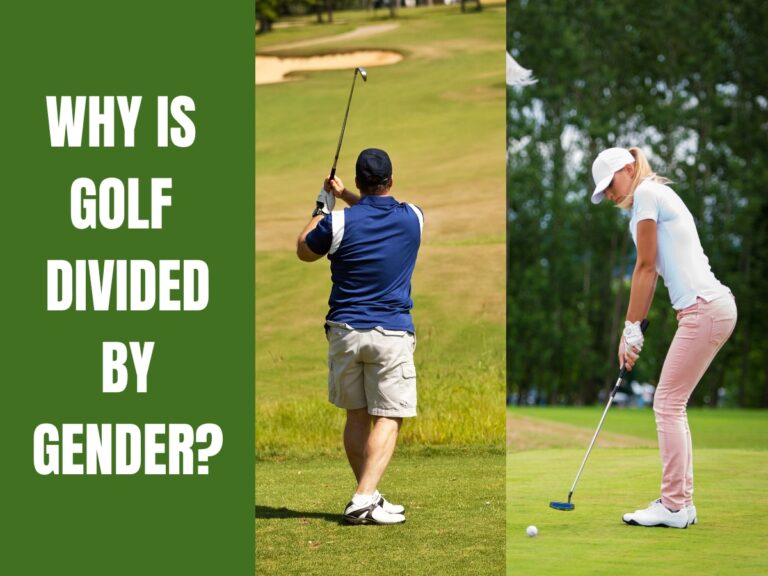10 Slowest PGA Tour Players (Who’s Boring To Watch?)
Slow golfers on the PGA Tour can be painful to watch, and even with the PGA’s efforts to speed up play by creating a ’40 second shot clock’ similar to the play clock in the NFL, some players on the PGA Tour still slow the pace down.
Watching golf on TV is deceptively fast as the coverage doesn’t show every shot or the processes or time the players take to set up their shots before making the swing. It seems that the game flows pretty quickly – so who are the slowest PGA Tour Players?

1. JB Holmes
At 40 years old, JB Holmes has had some success on Tour, but he has an established reputation for being a slow player. Jokes abound that you could build a metropolis in the time it takes him to complete a round, but he has also struggled with a wrist injury of late, which has only exacerbated his already slow pace of play.
2. Jordan Spieth

Spieth is a top-class golfer who didn’t have issues with his pace of play in his early days. However, after a massive slump in form between 2019-20, which led to him falling outside the world’s top 50, the Texans’ pace of play has dropped significantly from tee to green mainly because he now takes longer setup time to play drives and long irons that, during his slump, caused him so much trouble.
Luckily Spieth is superb at putting. He regularly makes 20-foot or more putts and misses next to nothing from inside 10 feet which allows him to pull back time.
3. Ben Crane
Throughout his playing career, Ben Crane was notorious for slow play. At the 2005 Booz Allen Classic, Crane’s mind-numbingly slow pace got to his playing partner, South African Rory Sabbatini. After finishing the 17th, Sabbatini became annoyed with Crane’s slow speed of play and walked off the green to the 18th, leaving Crane to finish the 17th alone.
There have been numerous occurrences where playing partners have left Crane on the green to finish and walked to the next tee; Crane’s career ended with his retirement in 2010.

4. Jason Day
Australian golfer Jason Day had surgery to repair an ongoing back injury which kept him off the course. Upon his return to the PGA Tour, Day’s slow pace due to this persistent injury has resulted in him being rated as the 4th slowest player on the PGA Tour.
He will take advantage when a playing group is not on the clock, and despite criticism over his slow pace, he focuses on the shots at hand and isn’t bothered by them.
Although he was ranked #1 in the world for a time, so it would not have been easy to level slow play concerns then, but now well out of the top 10, his slow pace continues to be a problem for playing partners.
5. Kevin Na
Kevin Na is known for being meticulous and precise with this game, and while this may result in better scores, it does slow down his pace during a round. He tends to take more time to get comfortable before making a shot, and this process has brought him to number five on the slowest PGA Tour players list.
I can remember waiting for an age for Kevin to tee off on the par 3, 12th at Royal Birkdale in the British Open while he waited for a blustery crosswind to ease. He must have addressed the ball and backed away at least three times!
In fairness, though, Kevin Na has worked on improving his pace over the last few years, much to the relief of his fellow PGA Tour players.
6. Bernhard Langer
There isn’t much this German player hasn’t done in the game, and he commands great respect at all levels of the Tour, except for his pace of play. Another player with a reputation for precision, he has been known to take five hours to play a round that most would finish in four.
He has had numerous run-ins with the organizers over his slow pace during his career; not all were friendly, and some even believe he is the slowest player ever on the PGA Tour.
7. Bryson DeChambeau

Aside from his somewhat abrasive attitude, Bryson does not endear himself to playing partners due to his unusually long pre-shot routine and his use of data in the form of charts and notes on each hole to determine the line and type of shots required.
This is because DeChambeau has taken the scientific aspect of golf to another level. Even though he is undoubtedly one of the longest hitters ever to grace the game, his slow pace of play is not always appreciated.
One thing about hitting the ball far is when you hit it offline, it tends to take much longer to find it, and this is another reason that DeChambeau makes this list of the slowest PGA Tour players.
****Update, as of summer 2022, DeChambeau is now contracted to the LIV Tour. Maybe this new Tour’s ‘shotgun starts’ will speed up his play!
8. Patrick Cantlay
Another great player, Cantlay’s precision play, has led to some superb victories. Still, like other players with a slow pace, his skill has not always been appreciated by playing partners and TV crews alike, with many joking that you could have breakfast in the time he takes to play.
The main reason for his slow pace is that he needs to look at the golf hole, assess the line, and approach a good number of times before actually making a shot. This all works out well when he hits it where he wants to, but not great when so much time is taken only for the ball to be struck offline!
9. Andrew Loupe
The PGA’s time clock or shot clock of 40 seconds was designed to speed up play, and while this is plenty of time for most golfers to get through their pre-shot routines, some players take decidedly longer, and Andrew Loupe is one of them.
He has been known to take a minute or more to set up and hit a shot, and when you add all of those minutes up in a round, the result is on the slowest PGA Tour players list!
10. Tiger Woods
Tiger’s inclusion in this list is only due to his current recovery from leg surgery after a car crash in 2021 left him in hospital with serious leg injuries. Post-recovery rounds have seen one of the fastest players being forced to slow down as his recovery progresses, contributing to his slower pace of play.
There is no doubt that Tiger will return to a faster pace of play if his wounds heal, but whether he will be back at his quickest remains to be seen.
Now that we have the top ten slowest players on the PGA Tour, let’s look at some of the causes of slow pace in PGA events and what the PGA is doing to improve the overall rate of play.

The PGA’s ‘Speed Up Play’ Initiative
We need to understand a little more about the pace of play, the pace of play rules, and why so many players don’t play at the regulated pace. We will also examine what action the PGA is considering to speed up play.
A standard rule in golf is ‘you must keep pace with the group infront’ to create a flow and speed on the course, whether pro or amateur. Having to wait for slow groups ahead of you is frustrating and can upset your own ‘game pace,’ thus causing you to lose concentration and have a poor round.
The speed-up play rules mean that you can only hit so many shots per hole, and once you reach that limit, you must pick your ball up and score accordingly, usually ten shots on a par 5.
‘Ready play’ is also common, which means players can play out of turn regardless of who is closer to the hole as long as it’s safe to do so. This is useful if players are on opposite sides of the fairway and have little chance of interfering with one another shots.
While this is mainly aimed at weekend golfers, time restrictions are imposed on professionals. Groups are monitored by the referees and informed if they are thought to be playing too slowly. If they fail to heed this ‘friendly’ warning, they are put ‘on the clock’ and officially timed.
If they do not improve, the tournament officials will be informed, and the players will be punished accordingly. Penalty shots could be added to their score, which could have financial implications if a player fails to make the cut.
How Is The Pace Of Play Determined?
While the golfer only has a maximum of 40 seconds to play each shot, from address to release, the pace of play is determined by how long it should reasonably take to complete a round of 18 holes. Some mitigating factors can slow the game down; we will look at those later.
The slowest players on the PGA Tour are on that list because they take the longest to complete an 18-hole round.
The average PGA Tour player can complete a round in about 4 hours, even less if favorable conditions. If the weather is playing ball and the course is playing well, with the greens not very fast and hole positions in good positions, a PGA Tour player can finish a round in 3.5 hours or better.
For a group of PGA players, it would take 10 minutes to play an average hole, with Par 5s taking a little longer and par 3s being shorter. So taking that into account, you have about 180 minutes over an 18-hole course which is around 3 hours.
Take into account a few minutes here and there for a friendly chat and some refreshments or looking for balls (occasionally), and the average time is between 3.5 and 4 hours.
What Can Make PGA Tour Players Play Slowly?
There are several reasons that some players will play much slower than others. Injuries, time over setup, assessing lines, hazards, and their pre-shot processes are all reasons that could contribute to slow play.
PGA Tour Players Will Play Slowly If They Are Injured
As we saw with Tiger returning from his significant leg injury, golfers carrying injuries will play slower as they are protecting their damage and so will take more time to get to the ball – in the case of a leg, hip, or back injury.
These types of injuries also mean that their time over the ball will be longer, so crouching over putts or setting up for drives, approach shots, pitches, and chips will eat away the shot clock and lengthen the time taken to play.
Most pros have a pre-shot routine that they execute on each swing, and if they are injured, this too can take longer as they may have to adapt their swing to accommodate the injury.
Wiggles, Waggles, Faffers & Step-Aways
This can drive players, commentators, and fans mad, which is when players ‘overdo’ the bits before they step up and hit the ball.
There seems to be an idea that because they are pros, they can take all day if they want, and even though there are penalties for slow play, they aren’t often enforced, especially when there is a lot at stake.
How A Player’s Mental State Can Slow Down Their Golf Game
In high-stakes events and tournaments, players experience high stress levels, where their mental strength comes into play. Confident players won’t second-guess their club choices and shot types before playing and will generally maintain a good pace of play through the round.
Of course, there may be a few shots in the round where they need to reassess the shot and club selection based on weather conditions, hazard risks, and hole difficulty, but because they already have most of the course data at their disposal, they don’t slow the pace down.
However, players who struggle with confidence tend to overthink every shot, drive, and putt. They will exceed the play clock by some margin – add all that time up, and you can turn a three-hour round into a five or six-hour round, which will not be very popular!
Standing over the ball, they will fuss and faff and reset while they deal with the negative thoughts and doubts and if they do this on every shot played, it will make them slow and certainly make their playing partners less than happy.
See also: How Many Players Are On The PGA Tour?
Final Thoughts
Numerous factors contribute to slow play, and while some, like the wind and weather, are unavoidable, other elements, such as a long pre-shot process with resets and more than a few practice swings, should be policed by the PGA and penalties levied at players that slow the game’s pace down excessively.
Of course, concessions will always be made for players struggling with injuries common on the PGA Tour. Still, top players like Koepka and McIlroy call for the pace of play to be improved, and until that is done, a slow pace will continue to dog the top level of professional golf.






